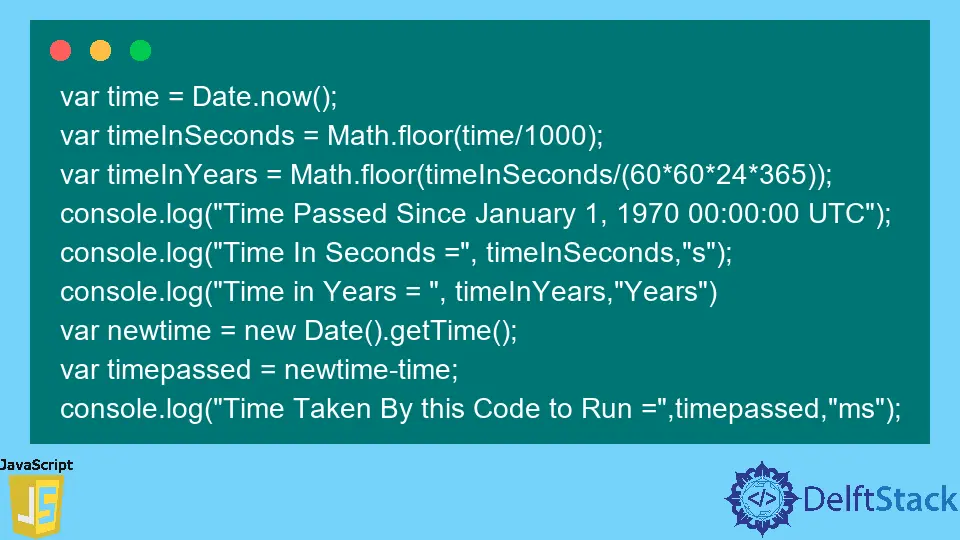JavaScript でタイムスタンプを取得する

JavaScript の Date.now() 関数を使用してタイムスタンプを取得できます。このチュートリアルでは、ガイドとして参照できる Date.now() 関数を使用するプロセスを示します。
JavaScript の Date.now() 関数を使用してタイムスタンプを取得する
Date.now() 関数を使用して、JavaScript でタイムスタンプをミリ秒単位で取得できます。Date.now() 関数は、1970 年 1 月 1 日から経過したミリ秒数を返します。たとえば、JavaScript の Date.now() 関数を使用して渡されたミリ秒数を見つけましょう。以下のコードを参照してください。
var t = Date.now();
console.log(t);
出力:
1622872385158
出力には、1970 年 1 月 1 日 00:00:00UTC から経過したミリ秒数が表示されます。時間を秒と年に変換し、console.log() 関数を使用してコンソールに表示してみましょう。以下のコードを参照してください。
var t = Date.now();
console.log(t);
var time = Date.now();
var timeInSeconds = Math.floor(time / 1000);
var timeInYears = Math.floor(timeInSeconds / (60 * 60 * 24 * 365));
console.log('Time Passed Since January 1, 1970 00:00:00 UTC');
console.log('Time In Seconds =', timeInSeconds, 's');
console.log('Time in Years = ', timeInYears, 'Years')
出力:
Time Passed Since January 1, 1970 00:00:00 UTC
Time In Seconds = 1622872385 s
Time in Years = 51 Years
出力からわかるように、1970 年から 51 年が経過しました。これは、現在 2021 年に住んでいることを意味します。同様に、変換式を使用して現在の月、日、時刻を見つけることもできます。Date.now() 関数は通常、プログラムまたはコードの実行にかかる時間を見つけるために使用されます。コードの開始時と終了時に時間を見つけて、時間差を評価できます。たとえば、上記のコードの実行にかかる時間を見つけましょう。以下のコードを参照してください。
var time = Date.now();
var timeInSeconds = Math.floor(time / 1000);
var timeInYears = Math.floor(timeInSeconds / (60 * 60 * 24 * 365));
console.log('Time Passed Since January 1, 1970 00:00:00 UTC');
console.log('Time In Seconds =', timeInSeconds, 's');
console.log('Time in Years = ', timeInYears, 'Years')
var newtime = new Date().getTime();
var timepassed = newtime - time;
console.log('Time Taken By this Code to Run =', timepassed, 'ms');
出力:
Time Passed Since January 1, 1970 00:00:00 UTC
Time In Seconds = 1622872385 s
Time in Years = 51 Years
Time Taken By this Code to Run = 1 ms
出力では、このコードにかかる時間は 1 ミリ秒です。ここでは、Date.now() 関数を使用して、さまざまな関数のパフォーマンスを確認できます。上記のプログラムでは、Math.floor() 関数を使用して浮動小数点数を整数に変換します。ビット単位の NOT~~などのビット単位の演算子を使用して、浮動小数点数を整数に変換することもできます。ビット単位の演算子は、Math.floor() 関数よりもわずかに高速ですが、長い数値では機能しない場合があります。
